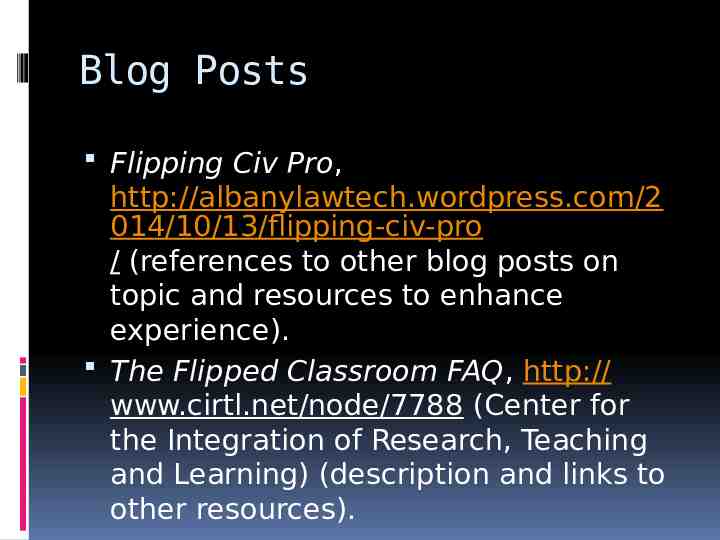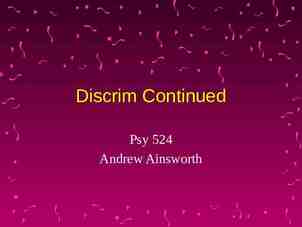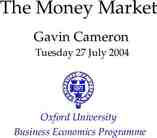MEDIATION WITH HEART: WEB-BASED TRAINING FOR CHANGE AGENTS
92 Slides4.49 MB
MEDIATION WITH HEART: WEB-BASED TRAINING FOR CHANGE AGENTS Presentation to the Members of the Tennessee Supreme Court Alternative Dispute Resolution Commission November 6, 2014 Nashville, TN
Prof. Paula Marie Young J.D. 1982., Wash. U. LL.M. in Dispute Resolution 2003, Mizzou. Professor of Law. Award-winning mediator. Past-President of the Virginia Mediation Network.
Commitment to High-Quality Practice Member, Executive Office of the Virginia Supreme Court, Mediator Ethics Committee (2007-2011). Engaged in a 3-year process to revise the standards of ethics, complaint procedures, and training guidelines for Virginia certified mediators. Supreme Court of Virginia approved the revisions in April 2011. http:// www.courts.state.va.us/court admin/aoc/djs/programs/drs/ mediation/home.html
Commitment to High-Quality Practice 3-term Member, Virginia Mediator Review Board (20052007; 2011-2012). Highest state disciplinary body for mediators. http:// www.courts.state.va.us/c ourtadmin/aoc/djs/progra ms/drs/mediation/forms/ adr1004proc.pdf (complaint form) http:// www.courts.state.va.us/c
Commitment to High-Quality Practice 3-term Member, Am. Bar Ass’n Section of Dispute Resolution, Standing Committee on Ethical Guidance for Mediators (2006-2011). Highest national mediation ethics committee or board. http:// apps.americanbar.org/d ch/committee.cfm?com DR018600&edit 1
Commitment to High-Quality Practice Co-Chair, Am. Bar Ass’n Section of Dispute Resolution Mediator Ethical Opinions Database Sub-Committee of the Standing Committee on Ethical Guidance for Mediators (20062008). http://www.americanbar .org/groups/dispute res olution/resources/media tor ethics opinions.htm
Commitment to High-Quality Practice Chair, Bar Exam Committee of the Am. Bar Ass’n Taskforce on Legal Education, ADR, and ProblemSolving (20102011).
Commitment to High-Quality Practice Author on following topics: Model Standards of Conduct for Mediators Grievances filed against mediators. UPL in the context of mediation. Teaching ethics using active learning techniques. Teaching mediation ethics using active learning techniques. Malpractice coverage for mediators. https://asl.academia.edu/PaulaMarieYoung
Inspiration for Course
Inspiration Web-based coaching programs of Christine Kane : UpLevel Your Life 997 UpLevel Your Business 1,625 Gold Mastermind 9,473
Components Online content Video Podcasts Transcripts Instructor contact Monthly Q&A calls Student community Retreats Facebook group Readings Exercises Private coaching sessions
Inspiration Frequent calls about my law school course, but: Offered at remote campus. Twice a week for two hours. Over 14 weeks. Cannot serve second- career professionals looking for easy course access.
Introduction to Blended Courses
Blended Course or Flipped Classroom A blended course combines online elements with face-to-face interaction. “Flipped” classrooms: the online component provides the lecture and the face-to-face time is used for discussion, analytical exercises, simulations, and other higher cognitive learning through active learning activities. “[O]ne of the most important emerging trends in education technology for higher education . . . [that] creat[es] a more efficient and enriching use of class time.” New Media Consortium Horizon Project, www.nmc.org/horizon-project
Active Learning Activities Socratic dialogue. Discussion. Writing. Outlining. Problem-solving. Simulations. Real-life experiences.
Goals for Law School Courses: Competency in: Thinking skills (analysis, synthesis, and critical thinking skills). Deep understanding of concepts and theories. Lawyering skills (interviewing, negotiation, oral advocacy, written advocacy). Professional values.
Key Elements of the “Flipped” Classroom
Key Elements of the “Flipped” Classroom Give students “first exposure” prior to class. Provide an incentive for students to prepare for class. Assess student understanding. Focus on higher cognitive activities during regular class time.
Bloom’s Taxonomy (revised)
Mediation with Heart Course Components
MWH Components of Course Like traditional face-to-face courses, it required thoughtful course design that adhered to the best practices for legal education. It is nearly identical to my law school course.
MWH Components of Course Best-practices: Encourage student-faculty contact. Encourage student cooperation. Encourage active learning. Give prompt feedback. Emphasize time on task. Hold high expectations. Respect diverse student talents and students’ diverse ways of learning. Gerald F. Hess, Teaching Law: Seven Guiding Principles, THE LAW TEACHER, Spring 1999, at 7.
MWH Components of Course Like any traditional, well-designed course, it had: Learning objectives. Learning outcomes. Syllabus. Class calendar. Class assignments. Deadlines. Incentives. Course evaluation.
MWH Components of Course Over 40 video webinar lectures with slides (30 to 70 minutes each). Sample: https:// plus.google.com/s/mediati on%20with%20heart (closing the mediation) http://webinarjam.com/me mbers / (platform) Opportunity to pose questions to instructor while watching video. Lifetime access to the videos.
MWH Components of Course Over 45 hours of discussion, analytical exercises, and simulations in a videobased Google Hangout (19 sessions). https:// plus.google.com/hangou ts (general info) Sample: https://plus.google.com/ events/ccqa8q3kke5lc6p 3i6jar8qv1no (spotting drafting
MWH Components of Course Instructor interaction in Hangout: Answering questions. Asking questions. Highlighting areas of concern. Clarifying misunderstandings. Drawing distinctions. Clarifying concepts. Elaborating on certain ideas. Making connections across modules. Jointly completing exercises. Providing feedback on exercises and simulations.
MWH Components of Course Two texts, with one providing links to online video demonstrations of mediation techniques. Links available for a year. http:// lawvideos.wolterskluwerlb.co m/protected/VideoLibrary.asp x Include: Entire mediations. Clips demonstrating specific skills. Clips demonstrating different styles.
MWH Components of Course Hamline videos on ethics issues. http://digitalcommons.h amline.edu/dri mclvide o /\ Prof. Jim Coben
MWH Components of Course Written course materials, including a copy of all Power Point slides. Four three-ring binders.
MWH Components of Course Ethics packet for each state, including ADRrelated statutes, lawyer professional rules, and Standards of Ethics. Three-ring binder.
MWH Components of Course Practice, in the Google Hangout, of various components of the process: Paraphrasing. Opening orientation. Interest identification. Caucus procedures. Option generation. Spotting drafting errors. At least 11 hours.
MWH Components of Course Three practice mediations in the Google Hangout (3.5 hours each; total 10.5 hours). Mountain Break-up Elizabeth’s Directive Symbolic Significance Instructor evaluation. Student feedback. Self-evaluation.
MWH Components of Course Final mediation, in person, with one-onone coaching and feedback (5 hours). Merging Interests Instructor evaluation. Role-player feedback. Self-evaluation.
MWH Components of Course Pricing 1,600
MWH Components of Course Community of Students: Google Hangouts. Emails. Six-month reunion. On-going support as students enter practice.
MWH Components of Course Meaningful Interaction with Instructor: Introductory lunch meeting. Google Hangouts. Emails. In-person final mediation.
MWH Components of Course Accountability: Reading assignments. Watching webinars and other videos. Exercises and roleplays. Attending Google Hangout.
MWH Components of Course Assessment: Written Exercises. Google Hangouts. Practice Mediations. Final Mediation. Instructor Evaluations. Student Evaluations. Self-evaluations.
Reflections on Course
Reflections on Course I have waited my entire teaching career for these resources! I am so very proud of what I created and the learning outcomes the students achieved.
Reflections on Course Elevated my teaching across all teaching forums. Law school. Webinar. CLE. CME. Faculty workshops. Technology is a tool, not a toy.
Reflections on Course Required significant time to create the materials and master the technology. Over 160 hours.
Reflections on Course Required financial investment in the technology. Webinar application. Professional mike or headset. Video camera. Thinkstock subscription for licensed use of photos in slides.
Reflections on Course Enhances options for appealing to various learning styles in the lower forms of cognitive work (gaining knowledge and comprehension). No longer limited to outside reading assignments and inclass lecture. Gives option to students. Read text first; then watch webinar. Watch webinar; then read text.
Reflections on Course Creates more time in class for the higher forms of cognitive work (application, analysis, synthesis, and problemsolving).
Reflections on Course Online simulations in Google Hangout did not lose nonverbal communication to any extent that undermined skill development. I specifically monitored for this concern.
Reflections on Course Students can re- watch webinar and other videos during assigned week, after the Google Hangout, or any time in the future when issues come up in practice. Lecture information is simply not available in
Reflections on Course No “back bench.” Higher student engagement. No perceived differences in skill level at end of course. Students really liked it!
Reflections on Course Scale likely limited to 10 to 20 students. Mostly an assessment issue. As currently designed, course requires significant instructor time and interaction.
Reflections on Course Quality of learning experience, whether face-to-face or online, depends on: Instructor’s ability. Instructor’s preparation and commitment to the teaching platform. Instructor’s mastery of subject matter. Student engagement.
Reflections on Course Possible Improvements -- Additions: Create a “student hub.” Create a Facebook private group. Use quizzes to ensure students have read assigned readings and/or watched webinars. Create transcripts of webinars. Additional state specific webinars.
Reflections on Course Possible Improvements -- Redesign: Slow pace of course to reflect that during Module 3, students preferred one class a week with a Hangout that focuses on skill practice. Re-record some webinars, especially those I recorded when fatigued. Proofread slides to eliminate all typos. Eliminate some non-essential classes to shorten course.
Reflections on Course Cannot look at course in isolation. Must consider its limitations in comparison to the limitations of a traditional 40-hour faceto-face training course. Must consider how much technology is being used in higher education at this point. Must consider audience of digital natives.
Unsolicited Testimonials
Unsolicited Testimonials: This has been an amazing experience. :) Thanks for blazing the path before me and making this so easy :) And cheers to Paula for giving me the skills to make it happen! Amanda
Unsolicited Testimonials: The class is sure doing a lot for me. Matter of fact, I was talking yesterday with a longtime friend who is dealing with one of her adult daughters over paying for the daughter’s car and her school tuition. I find myself talking to her about identifying interests, and the techniques we discuss in class ;rather than saying,’ Well, just tell her .’ Thank You for all your work, effort , and knowledge. J.D.
Unsolicited Testimonials: The format we have used is much more effective than the traditional classroom. Staying engaged is much easier because everyone is involved in the discussion at every point. This is the first serial webinar class I’ve ever taken, and I have been surprised and encouraged how each of us is continuously engaged in the work at hand. J.D.
Unsolicited Testimonials: I have had an interest in this training for about 5 years, primarily to help me be better prepared in church issues that can be helped by mediation, without ever finding a program that was not a crash course. Yours goes to a depth that I can feel like I am going in[to] [practice] with far more tools than the one week courses that are difficult to retain.
Unsolicited Testimonials: Today was very helpful. You worked like a coach. The difference in the week-long courses that we have talked about and the depth and length to which you present [the material] reminds me of a quote that I have seen. It seems that, when US President Garfield was President of a university, the father of a son tried to convince him to rush the son through the college program at a faster rate, than normal. The President said that he could, but that it depended upon whether the father wanted a giant oak tree or a squash. It has been a lot of work, but we will be much better prepared and successful in the future than if it was a light touch. Mike
Unsolicited Testimonials: I know that I learn best this way and it takes time and experience to get confident and capable and I know that we are headed in a great direction. Thank you for great instructive leadership. A lot of good learning and I am encouraged with what we are doing. [T]hanks to Paula for being a true teacher. Mike
Unsolicited Testimonials: Thanks for your support and comments. As a compliment for all that you are exposing us to in the way of practice, I am reminded that if we were in the one week crash course, we would not be talking about more practice sessions, which will make us more capable. I continue to appreciate the "hard work". We will be better for it. Mike
Rule 31 Requirements
Rule 31 Requirements Section 2. Definitions. (o) A "Rule 31 Mediator" is any person listed by the ADRC as a mediator pursuant to section 17 herein. Section 17. Rule 31 Mediators. No person shall act as a Rule 31 Mediator without first being listed by the ADRC. To be listed, Rule 31 Mediators must . . . comply with the . . . training requirements set forth in this section. All training must have been approved by the ADRC as set for in section (f) below . . . .
Rule 31 Requirements Section 17. Rule 31 Mediators. (a) Rule 31 Mediators in General Civil Cases. (1) To be listed by the ADRC as a Rule 31 Mediator in general civil cases, one must . . (C) complete 40 hours of general mediation training which includes the curriculum components specified by the ADRC for Rule 31 Mediators in general civil cases.
Rule 31 Requirements Section 17. Rule 31 Mediators. (c) Content of Training Programs for Rule 31 Mediators. 1) Before being listed either as Rule 31 General Civil Mediators . . . applicants shall complete a course of training consisting of not less than 40 hours, including the following subjects:
Rule 31 Requirements (A) Rule 31 and procedures and standards adopted thereunder; (B) conflict resolution concepts; (C) negotiation dynamics; (D) court process; (E) mediation process and techniques; (F) communication skills; (G) standards of conduct and ethics for Rule 31 Neutrals; (H) community resources and referral process; (I) cultural and personal background factors; (J) attorneys and mediation; (K) the unrepresented party and mediation; and (L) confidentiality requirements, and any exceptions thereto as required by law.
Rule 31 Requirements Section 17. Rule 31 Mediators. (f) Trainer Procedure for Obtaining Curriculum Approval. Prior to offering their courses for initial listing training . . . all trainers are required to obtain ADRC approval of their curricula. The trainers shall apply to the ADRC for curricula approval on forms approved by the ADRC.
Rule 31 Requirements Section 17 designates coverage of approved courses, but not pedagogical approach.
Rule 31 Requirements Application for Approval of 40-Hour Civil Mediation Training Course, http:// www.tncourts.gov/sites/default/files/docs/40 hour civil medi ation training application 2014.03.24.pdf Requires: Student participation in role-plays as a mediator and a party. Trainer to view no more than two role-plays simultaneously. Role-play evaluations. Way to ensure student attendance at all sessions of course. Asks about teaching techniques used: Lecture * Written Exercises * Group Discussion * Mediation Simulation * Readings * Other Asks for hours spent in lecture and exercises on listed topics. Asks to confirm ethics coverage. Does not require a minimum number of hours engaged in role-plays or other active learning exercises.
Potential Concerns
Potential Concerns? Scale and limits on enrollment. Effective transfer of mediation skills. Picking up on non-verbal communication in online simulations. Time spent on skill building in role- plays and other interactive exercises.
Cycle of Learning
The Learning Cycle Informatio n Absorption Input to Memory Retrieval from Memory Applicatio n to New Situation: Problem Solving
Absorption of Information – Learning Styles
Informati on Absorpti on Verbal Visual Aural Oral Tactile Kinesthetic
Brain Anatomy and Function
Empirical Research on Online Courses
Vanderbilt Center for Teaching Cynthia J. Brame, CFT Assistant Director Flipping the Classroom, http://cft.vanderbil t.edu/guides-sub-p ages/flipping-the-cl assroom / Study of application to physics classes.
Guru on Law Teaching Gerald F. Hess, Blended Courses in Law School: The Best of Online and Face-to-Face Learning, 45 MCGEORGE L. REV. 51 (2013). Founder of the Institute for Law Teaching & Learning (ILTL)
Author of Leading Books
Research: Looked at studies conducted in 2005 and 2010 of online and “blended” courses.
Research Findings: Online or blended courses “produce stronger student learning outcomes than classes with solely face-to-face instruction . . . .” “[O]nline instruction was significantly more effective than face-to-face instruction . . . . regardless of the type of learner . . . or the subject matter . . . . regardless of the type of learning involved – declarative knowledge, the ability to perform a skill, or strategic knowledge.” At 68-69.
Other Resources
Other Law Review Resources: Sean F. Nolan, Using Distance Learning to Teach Environmental Problem-Solving Skills and Theory, 28 J. ENVT'L LAW & LITIGATION 211 (2013) (group facilitation/negotiation course). Steven C. Bennett, Distance Learning in Law, 38 SETON HALL LEGIS. J. 1 (2013). Dale Dewhurst, The Case Method, Law School Learning Objectives and Distance Education, 6 CAN. LEGAL EDUC. ANN. REV. 59 (2012). Joseph A. Rosenberg, Confronting Cliches in Online Instruction: Using a Hybrid Model to Teach Lawyering Skills, 12 SMU SCI. & TECH. L. REV. 19 (2008).
Other Law Review Resources Joshua N. Weiss, A View Through the Bubble: Some Insights from Teaching Negotiation Online, 21 NEGOTIATION J. 71 (2005). Lori Abrams, Peter McAteer, David Fairman & Lawrence Susskind, Negotiation Pedagogy Faculty Dinner Seminar on Teaching Negotiation Online, PON, Harvard Law School (Apr. 17, 2012). “[M]elding of the ‘technical’ and the ‘relational,’ using technology as an enabler, but not eliminating more traditional classroom or cohort interaction.” Summary available at: http://www.pon.harvard.edu/research projects/negotiation -pedagogy-program-on-negotiation/teaching-negotiation-o nline-spring-nppon-faculty-dinner-explores-online-learning /
ILTL Resources Alex Berrio Matamoros, How Flipping the Classroom Made My Students Better Legal Researchers and Me a Better Teacher, THE LAW TEACHER (Spring 2014) at 16, http:// lawteaching.org/lawteacher/2014spring/lawteacher2014s pring.pdf Angela Upchurch, Flipping the Law School Classroom: Optimizing the Law School Classroom, http:// lawteaching.org/conferences/2013/handouts/5a-LawScho olClassroom.pdf (ILTL workshop outline). Michael Hook Dewey, The Upside-Down Classroom: How the flipped lecture model can be used in legal education, http:// lawteaching.org/conferences/2013/handouts/1c-Upside-D ownClassroom.pdf
ILTL Resources Aaron Dewald, Considerations in Designing and Implementing a Hybrid Course in Legal Education, http:// lawteaching.org/conferences/2013/wo rkshops/session5.php (ILTI Workshop June 2013). For More: http://lawteaching.org/searchresults/? cx 005727683035145350083%3Al52 wlgwmnia&cof FORID%3A11&ie UT F-8&q flipping&sa Search&siteurl l
Resources on Web Relating to Law School “Flipped” Courses: https://www.google .com/webhp?sourc eid chrome-instan t&ion 1&espv 2& ie UTF-8#q % 22How%20to%20fl ip%20the%20law% 20school%22
Blog Posts Flipping the Classroom: Interview of Michele Pistone, Founder of LegalED (Oct. 29, 2014), http ://blog.scholasticahq.com/post/101088277698/fli pping-the-law-classroom-interview-with-michele #. VFPkivnF91b Mary Lynch, Flipping Law School Classes, Best Practices for Legal Education (April 27, 2013), http://bestpracticeslegaled.albanylawblogs.org/2 013/08/27/flipping-law-school-classes / Mary Lynch, Future of Legal Ed: TedTalks, Kahn Academy, and LegalED Web (April 21, 2013), http://bestpracticeslegaled.albanylawblogs.org/2
Blog Posts Flipping Civ Pro, http://albanylawtech.wordpress.com/2 014/10/13/flipping-civ-pro / (references to other blog posts on topic and resources to enhance experience). The Flipped Classroom FAQ, http:// www.cirtl.net/node/7788 (Center for the Integration of Research, Teaching and Learning) (description and links to other resources).

































































































